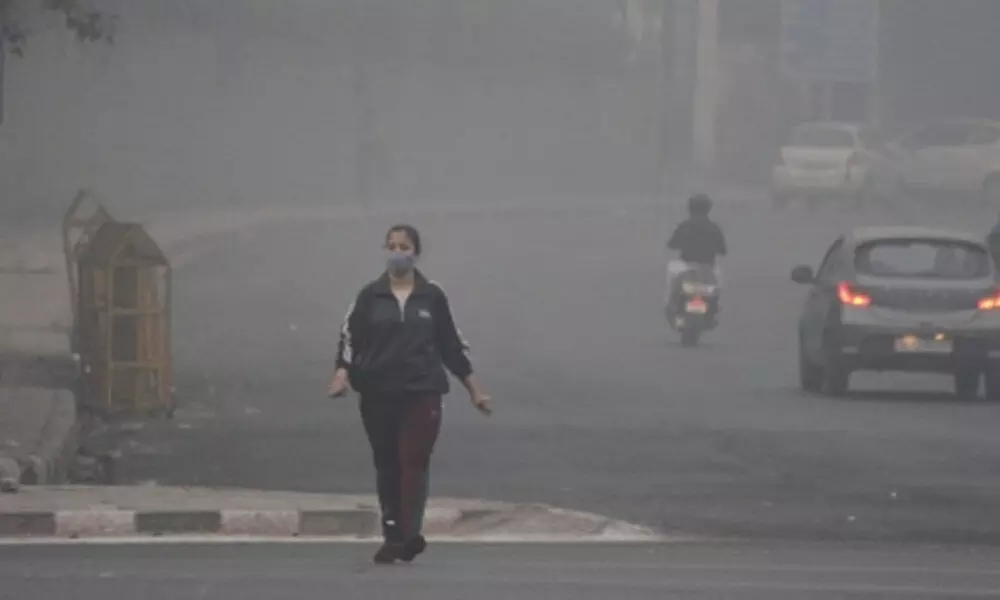Live
- Attack on media: Take action against Mohan Babu, demand journalists
- More sports equipment promised at Central Park
- Mohan Babu’s attack on journalists inhumane act
- West Quay-6 of VPA to get revamped
- Rajaiah demands govt to introduce SC categorisation Bill in Assembly
- Make all arrangements for smooth conduct of Group-2 exams
- CP congratulates chess champs
- Stage set for children’s science exhibition
- ‘Generation Green’ initiative to drive e-waste awareness
- Mysore royal family to get Rs 3,000 crore compensation for Palace Grounds
Just In
AQI of 8 areas in Delhi-NCR crosses 400-mark on Diwali afternoon


AQI of 8 areas in Delhi-NCR crosses 400-mark on Diwali afternoon (Photo/IANS)
Even before bursting of crackers, the air quality of Delhi-NCR region has worsened further as AQI of eight areas here has crossed the 400-mark and settled at 'severe' category by Thursday afternoon, Central Pollution Control Board (CPCB) data showed.
New Delhi: Even before bursting of crackers, the air quality of Delhi-NCR region has worsened further as AQI of eight areas here has crossed the 400-mark and settled at 'severe' category by Thursday afternoon, Central Pollution Control Board (CPCB) data showed.
AQI of five areas in Delhi, two in Ghaziabad was recorded over 400 by CPCB in its data collected at 1 p.m, showing Wazirpur (433), Alipur (406), Bawana (402), Jahangiri (439) Nehru Nagar (413) in Delhi, Loni (450) and Sanjay Nagar (404) in Ghaziabad and Sector 62 (420) in Noida among those under the last category of the index.
The meteorological agencies have predicted an AQI of 500 plus for Thursday and Friday when Delhiites burst crackers on Diwali day.
According to health experts, an AQI of such an extent may cause respiratory problem even on healthy people, and serious health impacts on people with lung or heart disease. The health impacts may be experienced even during light physical activity.
With stubble burning share in Delhi's air pollution set to increase over the next three days, SAFAR has projected an AQI of 500 plus on November 5 even if Delhiites burst 50 per cent less crackers compared to the last year.
SAFAR, or the System of Air Quality and Weather Forecasting And Research under the Indian Institute of Tropical Meteorology (IITM) – an agency under the Ministry of Earth Sciences – said as per sensitivity simulation, stubble share on November 4 is predicted to increase to 20 per cent and will touch a peak of 35-40 per cent on November 5 and 6, if fire counts are considered same as today (3,500-4,000). This is largely due to transport level winds reaching Delhi from North-Westerly, where stubble burning hotspots are expected, SAFAR said.

© 2024 Hyderabad Media House Limited/The Hans India. All rights reserved. Powered by hocalwire.com






